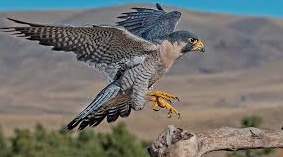GREEN TURTLES ARE ENDANGERED
These graceful sea creatures can live as long as 80 years, and may grow to be 500 pounds. As vegetarians they enjoy eating seaweed, seagrass and algae. The female turtle lays her eggs on land after digging a nesting burrow. She then covers everything back up with sand or mud. Once the eggs are laid, the mother turtle must return to the safety of the sea. Survival can be very difficult for the babies when they hatch. They are entirely on their own.
Green Turtles are endangered which means that there are so few left in the wild that they may go extinct. The Endangered Species Act says its against the law to hunt them or take their eggs. Unfortunately, one of their greatest threats is still mankind. Poachers illegally hunt them for their beautiful shells or steal their eggs. Plastic straws and even small pieces of plastic litter floating in the ocean are a danger to them. Mistaking plastic for food, they become ill and die when they eat it.
WHAT YOU CAN DO:
Never Litter.
Reduce your use of Plastic.
Keep watch.
Support laws that protect endangered species so that they may share the planet with us.
MOUNTAIN GORILLAS ARE ENDANGERED
Mountain gorillas live in family units, just like people. 98% of their genetic code (their DNA) is the same as the DNA in you and me. Every gorilla has a unique set of wrinkles around it’s nose. These lines are so specific that they can be used by scientists, just like a fingerprint, to tell one animal from another. Not surprisingly these wrinkles are called “noseprints”.
Like the Green Turtles, Mountain Gorillas are endangered and may go extinct. Man is trying to protect them in their tropical African habitats in Rwanda, Democratic Republic of Congo, and Uganda. Their greatest threats are poachers, climate change with shrinkage of their habitat, and disease.
WHAT YOU CAN DO:
Watch and learn so that you may support laws that protect them.
Have a “save the mountain gorillas” birthday or school gathering. If all your friends bring a small donation, you will be there on the front lines, with wildlife supporters.
Go trekking, some day, in the mountains of Africa with a gorilla guide. This could be the adventure of a lifetime. It also provides financial support to gorilla families..
PEREGRINE FALCONS ARE THREATENED
These falcons are the fastest animals on the planet. In a steep dive, their speed may top 200 miles/hour! They live on all continents except Antartica and their name means “to wander”.
In 1970 they were endangered and on the brink of extinction. Humans were using a pesticide called DDT. Scientists discovered that this pesticide became incorporated into the eggs of Peregrine Falcon chicks. This caused the shells to be thin and fragile. If the shells cracked too soon the baby birds could not survive. There were only 324 falcon parents left, in 1975. But once again, like it did for the Green Turtles and the Mountain Gorillas, the Endangered Species Act came to the defense. The use of the pesticide DDT was banned and the falcon mothers began to lay stronger eggs again. Their population is recovering but not safe yet. These birds are still considered ‘threatened’.
WHAT YOU CAN DO:
Learn about endangered species.
Support laws like the Endangered Species Act.
Tell the success story of the Peregrin Falcon. People, working together, can save animals from extinction.


